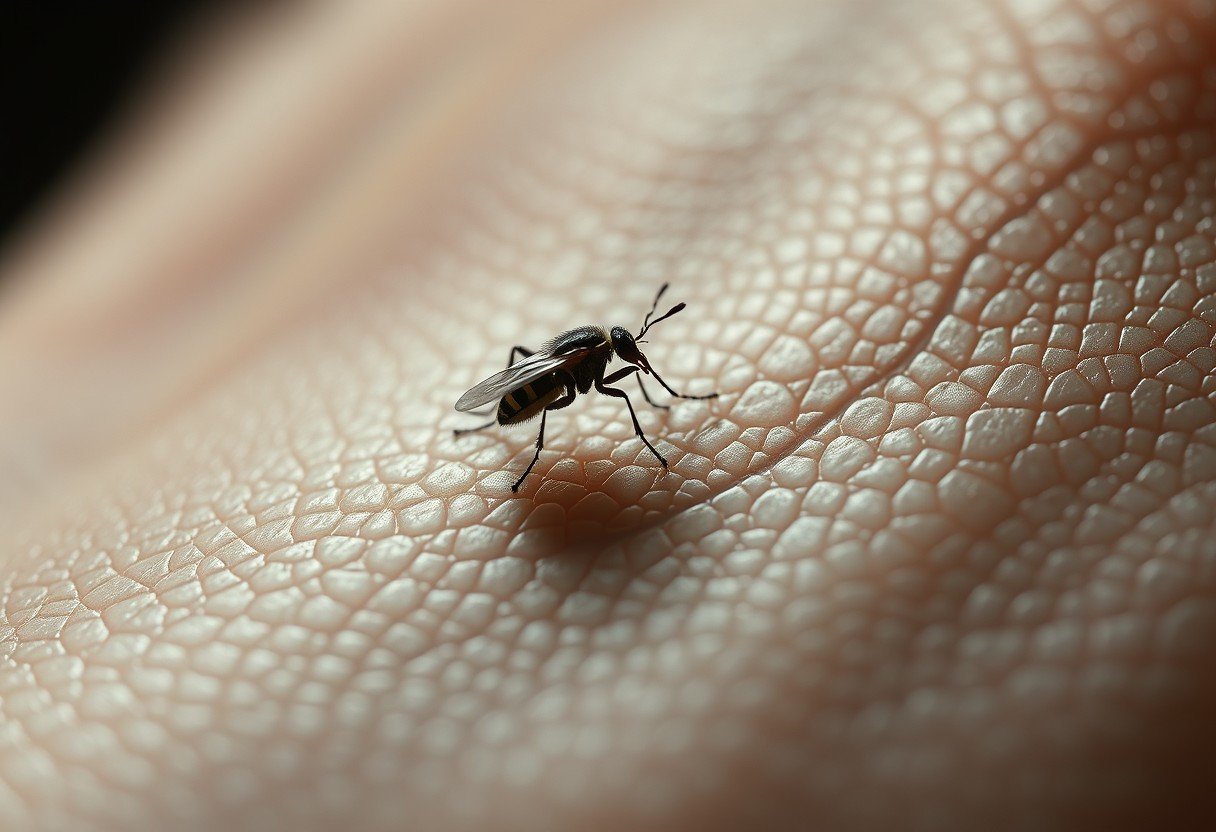Feeling the light tickle of an insect on your arm is a common experience, but have you ever wondered how your body detects such a gentle touch? This amazing ability comes from specialized sensory receptors in your skin called mechanoreceptors. These tiny detectors respond to pressure and vibration, instantly sending a signal to your brain. This process allows you to perceive the insect’s presence and react, showcasing the incredible complexity of your sense of touch.
What are Sensory Receptors?
Your ability to interact with the world around you is all thanks to sensory receptors. These are specialized cells that act like tiny messengers for your nervous system.
Their main job is to detect different types of stimuli from your environment, such as light, sound, or in this case, touch. Once a stimulus is detected, the receptor converts it into an electrical signal that your brain can understand.
This conversion process is vital for survival, as it allows you to react to your surroundings, whether it’s pulling your hand away from a hot surface or feeling the gentle landing of a ladybug.
Meet the Mechanoreceptors: Your Skin’s Touch Detectives
When it comes to feeling touch, mechanoreceptors are the true heroes. As their name suggests, they are designed to respond to mechanical forces like pressure, stretching, or vibration. They are the specific type of sensory receptor responsible for letting you know an insect has landed on you.
These receptors are embedded throughout your skin. When an insect’s tiny legs press down, they cause a slight distortion or change in the shape of the skin. This physical change is exactly what a mechanoreceptor needs to activate.
Once triggered, it fires off a signal through nerve fibers, starting a rapid communication process that ends with you feeling that distinct tickling sensation. Without mechanoreceptors, your sense of touch would be almost nonexistent.
The Different Types of Mechanoreceptors in Your Skin
Your skin doesn’t just have one type of mechanoreceptor; it has several, each specializing in a different kind of touch. This variety is what gives you such a rich and detailed perception of your environment. Some receptors are better at detecting light, brief touches, while others are designed for deep, sustained pressure.
For feeling something as light as an insect, a few key players are involved. Meissner’s corpuscles and Merkel cells are located close to the skin’s surface and are extremely sensitive to light touch and pressure, making them perfect for the job.
Here is a breakdown of the primary mechanoreceptors and what they do:
| Receptor Type | Sensation Detected |
|---|---|
| Meissner’s Corpuscles | Light touch and flutter |
| Merkel Cells | Sustained light pressure and texture |
| Pacinian Corpuscles | Deep pressure and high-frequency vibration |
| Ruffini Endings | Skin stretch and sustained deep pressure |
This division of labor ensures that you can distinguish between a wide range of tactile sensations, from a soft caress to a firm grip.
How Your Brain Knows an Insect has Landed
The process of feeling a touch happens in the blink of an eye. After a mechanoreceptor is triggered by the insect, it generates an electrical impulse. This signal doesn’t stay in your skin; it immediately begins a journey to your brain.
The signal travels along peripheral nerves to your spinal cord. From there, it ascends through specific neural pathways directly to the brain’s somatosensory cortex. This is the part of your brain dedicated to processing bodily sensations.
The somatosensory cortex interprets the incoming signal, identifying its location, intensity, and nature. In an instant, your brain tells you, “There’s a small insect crawling on your arm,” allowing you to respond by either observing it or brushing it away.
Why is This Sensory Feedback so Important?
Sensory feedback is more than just feeling things; it is a critical tool for survival and awareness. It provides a constant stream of information about your body’s interaction with the environment.
This feedback allows you to make rapid adjustments, like maintaining your balance while walking or noticing a potentially harmful insect on your skin. Without it, your ability to navigate the world safely would be severely limited. Your awareness of your surroundings would decrease, putting you at greater risk.
From enjoying the texture of a soft blanket to detecting a potential threat, sensory feedback enriches your experiences and keeps you safe.
Factors that Can Change How You Feel Touch
Interestingly, not everyone perceives touch in the same way, and your own perception can change depending on various factors. Your ability to notice an insect on your skin can be influenced by both internal and external conditions.
Your brain plays a huge role in filtering sensory information. If you are deeply focused on a task, you might not even notice a light touch that would otherwise be obvious. This shows that perception is not just about the receptors but also about your brain’s interpretation.
Several factors can affect your sensory perception:
- Attention Level: A distracted mind is less likely to notice subtle sensations.
- Emotional State: Anxiety or excitement can heighten or dull your senses.
- Environmental Influences: A noisy or chaotic environment can make it harder to focus on tactile feelings.
Genetics, age, and overall health also contribute to individual differences in touch sensitivity. Some people are naturally more sensitive due to a higher density of mechanoreceptors in their skin.
The Future of Sensory Perception Research
The study of sensory receptors is a dynamic field with exciting possibilities for the future. Scientists are continually exploring the intricate mechanisms behind our sense of touch, which could lead to significant breakthroughs in medicine and technology.
Advancements in imaging techniques are allowing researchers to observe how mechanoreceptors function in real time. This deeper understanding could pave the way for new treatments for chronic pain, neuropathy, and other sensory disorders.
Furthermore, this research has implications for creating more advanced prosthetics that can provide users with a realistic sense of touch. By learning to interface with the nervous system, we may one day be able to restore or even enhance tactile sensations for those who have lost them.
Frequently Asked Questions
Which type of sensory receptor feels an insect on the skin?
The primary receptors are mechanoreceptors, which respond to mechanical pressure. Specifically, Meissner’s corpuscles and Merkel cells are highly sensitive to the light touch and pressure caused by an insect.
What are mechanoreceptors and how do they work?
Mechanoreceptors are specialized nerve endings in the skin that detect physical distortion like pressure or vibration. When an insect touches the skin, these receptors convert that physical force into an electrical signal that is sent to the brain for interpretation.
Why are some parts of my body more sensitive to touch?
Sensitivity varies because of the density of mechanoreceptors. Areas like your fingertips, lips, and face have a much higher concentration of these receptors, making them more sensitive to light touch compared to areas like your back.
How fast do we feel a touch like an insect landing?
The response is incredibly fast, often occurring in milliseconds. Mechanoreceptors are designed for rapid signaling, allowing your nervous system to transmit the touch sensation to your brain almost instantaneously for a quick reaction.
Can our feelings of touch change over time?
Yes, sensory receptors can adapt to constant stimuli. For example, you quickly stop noticing the feeling of your clothes against your skin. This adaptation allows your nervous system to focus on new or changing stimuli, like the brief contact of an insect landing.









Leave a Comment